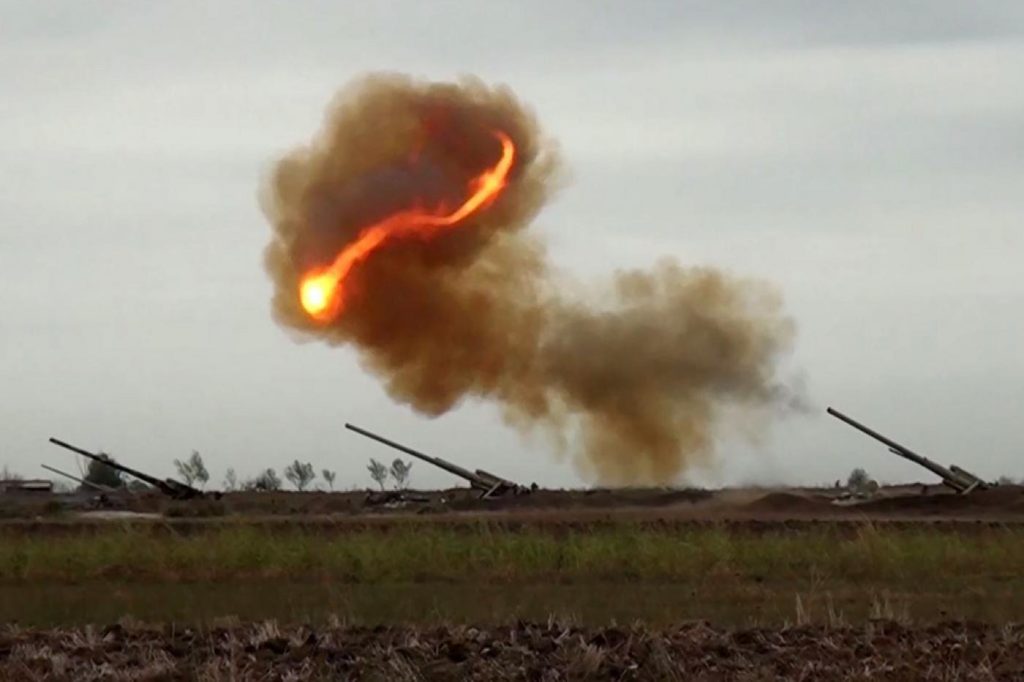
Fighting between Armenian and Azerbaijani military forces over the breakaway region of Nagorno-Karabakh continued Wednesday for the 11th day, with no sign of a ceasefire. More than 300 people have reportedly been killed since the long-simmering dispute erupted in violence on September 27.
The two nations have disputed ownership of the mountainous enclave since becoming independent with the breakup of the former Soviet Union. Nagorno-Karabakh is internationally recognized as part of Azerbaijan, but it has been run autonomously by and is primarily populated by ethnic Armenians.
An official from the regional administration said Wednesday that the fighting had already driven half of Nagorno-Karabakh’s civilian population out of their homes.
“According to our preliminary estimates, some 50% of Karabakh’s population and 90% of women and children — or some 70,000-75,000 people — have been displaced,” the Nagorno-Karabakh administration’s rights ombudsman Artak Beglaryan, told the AFP news agency.
The fighting in the Caucasus has ended 25 years of relative peace, delivered by a ceasefire brokered to end a deadly war between the former Soviet republics over Nagorno-Karabakh in the 1990s.
On Tuesday, Azerbaijani officials claimed that Armenian forces had targeted an oil pipeline with cluster munitions, which most nations have banned the use of. The Armenian Ministry of Defense promptly dismissed the accusation, insisting Armenian forces had not targeted any oil or gas infrastructure.
There have been claims from both sides that the other is indiscriminately shelling civilian areas.
Earlier this week, Amnesty International issued a report corroborating information that cluster munitions had been used during the bombardment of Stepanakert, Nagorno-Karabakh’s main city, also known as Khankendi, by the Azerbaijani Armed Forces.
Amnesty called on both Armenia and Azerbaijan to become parties to the Convention on Cluster Munitions, which neither of the two have signed.
The president of neighboring Iran, Hassan Rouhani, warned Wednesday that the Azerbaijan-Armenia conflict could escalate into a regional war. Those fears have been voiced, too, by independent analysts who note, specifically, the lack of any meaningful intervention by the Trump administration in the U.S.
Russian President Vladimir Putin has described it as a tragedy. Putin, who has not picked sides in the conflict and who’s government has sold military hardware to both, said a peaceful resolution appeared “still a long way off, but in any case, we call for a ceasefire.”
Putin spoke Wednesday on the phone with his Azerbaijani counterpart Ilham Aliyev. He had previously spoken with Armenian Prime Minister Nikol Pashinyan four times since the hostilities broke out, according to the Kremlin.
The Russian government has also voiced concern over the involvement of fighters from Syria in the conflict. French President Emmanuel Macron said last week that evidence suggested Syrian jihadist fighters had traveled to the Caucasus through Turkey, which backs Azerbaijan in the fighting.
Armenia has accused Turkey of sending Syrian mercenaries to join Azerbaijani forces.
Armenian officials have said they are ready to engage with mediators of the so-called Minsk group — France, Russia and the U.S., which helped negotiate the last ceasefire over Nagorno-Karahabk — to work toward a new agreement.
Thus far Azerbaijan, with Turkey’s support, has rejected calls for a ceasefire, demanding instead the withdrawal of all Armenian forces from the breakaway region, and from adjacent territory seized during the war in the 1990s.
Understanding the war in Nagorno-Karabakh
Nagorno-Karabakh
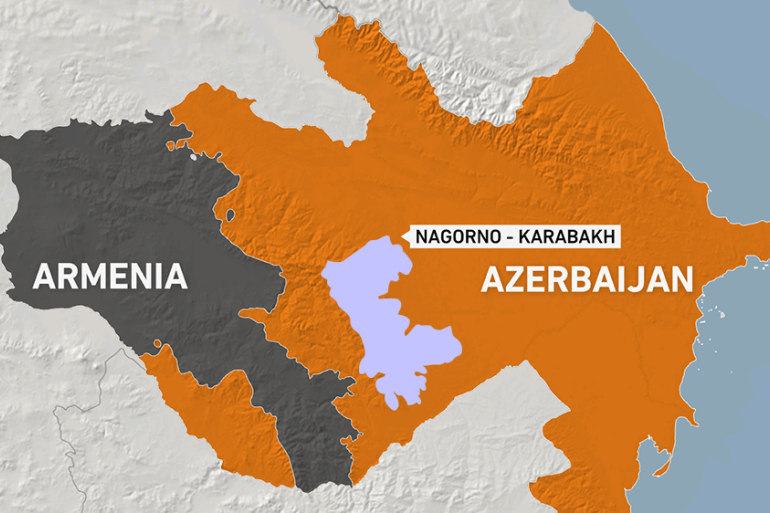
Nagorno-Karabakh is a 4.400-square-kilometer (1,700-square-mile) enclave with a population of 150,000. It is situated in the heart of Azerbaijan, but most of the population are Christian Armenians, with only a minority of Azeris or Turks. The enclave is a product of the Soviet policy of divide-and-rule, a policy that has been used by all occupiers . With the dissolution of the Soviet Union, Armenia tried using peaceful methods in order to transfer the enclave to its sovereignty, but this met with opposition. War broke out between the two countries in 1988 over control of this enclave. This intensified in 1991 and lasted for three years, and included ethnic cleansing and a massacre of Armenians in Baku. Thirty thousand people died, and one million lost their homes.
A cease-fire was declared in the enclave in 1994, with borders determined, but since then, all international efforts to reach a permanent solution have been in vain. The Armenians in the enclave declared an independent state called the Republic of Artsakh, which has not been recognized by any country, , including Armenia. The relative quiet reigning there over the last 25 years was breached from time to time with border incidents flaring up, or with short exchanges of fire. This is not the case this time, not in the extent of forces involved or in the intensity of fighting. This conflict is a classic geographical, historical, religious and ethnic one, but it exceeds the boundaries of the Caucasian region, interfacing with the battle between Shi’ite Iran and Turkey over regional hegemony, all under the eyes of Big Brother, namely Russia.
Strange bedfellows
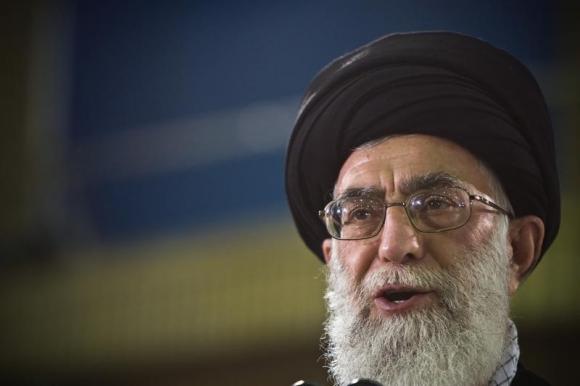
Turkey and Israel, currently hostile to one another (with Recep Tayyip Erdogan stating only last week that Jerusalem belongs to the Moslems), find themselves both supporting Azerbaijan, a Shi’ite Moslem country. On the other side, Iran, a third of whose population is of Azeri extraction (including its Supreme Leader Ali Khamenei), is supporting Christian Armenia and, according to some reports, supplying it with weapons. Russia, which has a military base in Armenia, is trying to please everyone, arming Azerbaijan as well. The same pattern of behavior characterizes the Kremlin’s policy in Syria, with Vladimir Putin assisting the regime of Bashar Assad and the Iranians, while providing Israel with “silent encouragement” for carrying out air strikes against Iranian positions, Hezbollah and Shi’ite militias. Greece, a strategic ally of Israel, currently in conflict with Turkey over the transport of natural gas in the eastern Mediterranean basin, is supporting Armenia.
Armenian Genocide

(Getty Images)
While Israel insists the whole world should recognize the Holocaust when Nazi Germany and its collaborators systematically murdered millions of Jews, it refuses to to recognize the massacre of Armenians by the Ottoman Empire during World War I, as a genocide. For years, this position was adopted in order not to annoy Turkey, which for 50 years was Israel’s strategic ally against Syria and, later, Iran. The Mossad and Turkish intelligence cooperated with each other, with Israel’s defense industries selling arms to Turkey for billions of dollars. Ironically, among the systems sold to Turkey were drones and technology which helped Turkey build a comparable industry. Turkish Bayraktar drones are now in action in Nagorno-Karabakh’s battlefields, as well as in Iraq, Syria and Libya.
Despite the dismantling of the strategic alliance between it and Turkey , Israel has not used this as an opportunity to fulfill its historic duty and follow its conscience and values regarding the Armenian genocide. The reason for this is Azerbaijan. At the same time that Erdogan started distancing himself from Israel, Azerbaijan and Israel grew closer. It soon became clear that the two countries had set up a strategic alliance centered on their mutual hostilities towards Iran.
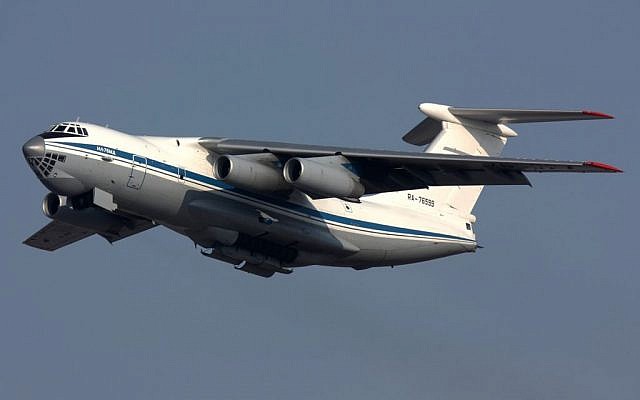
Ben-Gurion Airport has been very busy with , cargo flights on the Azerbaijan route over the last two weeks as a result of the renewal of fighting between Armenia and Azerbaijan over the disputed enclave of Nagorno-Karabakh. No fewer than four Ilyushin-76 planes, operated by the Azeri cargo airline Silk Way, which serves the Azeri defense ministry, have touched down and taken off from the Uvda air base in southern Israel – two, before the outbreak of fighting, and two, afterwards. According to flight regulations, that is the only airport from which planes loaded with explosive material are allowed to take off.
Israel has come under diplomatic fire from Armenia over its arms sales to Azerbaijan
The four Azeri planes reportedly flew directly from Baku to Uvda and back, their flight path documented on various open websites that monitor air traffic. Some of these planes also flew from Baku to Ankara and Istanbul and back over the last two weeks.
Cluster bombs
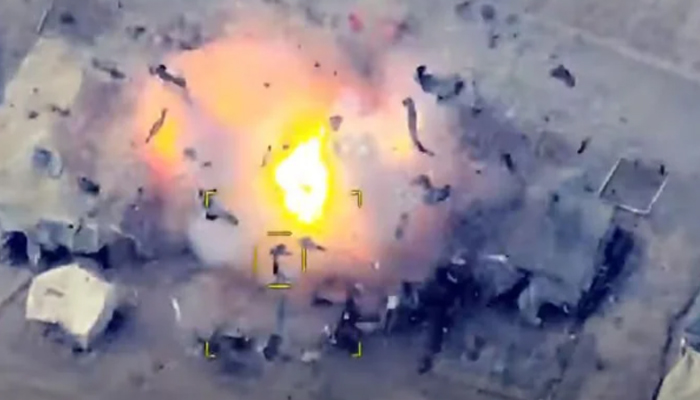
Despite the fact that luster bombs are banned , Amnesty International identified Israeli-made M095 DPICM cluster munitions that appear to have been fired by Azerbaijani forces.
“The use of cluster bombs in any circumstances is banned under international humanitarian law, so their use to attack civilian areas is particularly dangerous and will only lead to further deaths and injuries,” said Denis Krivosheev, Amnesty International’s acting Head of Eastern Europe and Central Asia.
US silence
The ongoing war is latest example of US diplomatic disengagement from theatres around the world, amid wider fears of a hollowing out of the US state department under Donald Trump.
“The Americans have withdrawn from this issue,” said Thomas de Waal, a senior fellow specialising in the Caucasus with Carnegie Europe. “If Trump has heard of Azerbaijan, it’s because it’s a place he wanted to build a Trump tower in.”
The Trump administration has been largely silent about the conflict. Secretary of state, Mike Pompeo, only commented on it when asked about it in an interview this week, and he was non-committal.
“Our view is that this has been a longstanding conflict between these two countries in this particular piece of real estate,” Pompeo told Fox News. “We’re discouraging internationalization of this. We think outsiders ought to stay out. We’re urging a ceasefire. We want them both to back up. We’ve spoken to the leadership in each of the two countries, asking them to do just that.”
Agencies
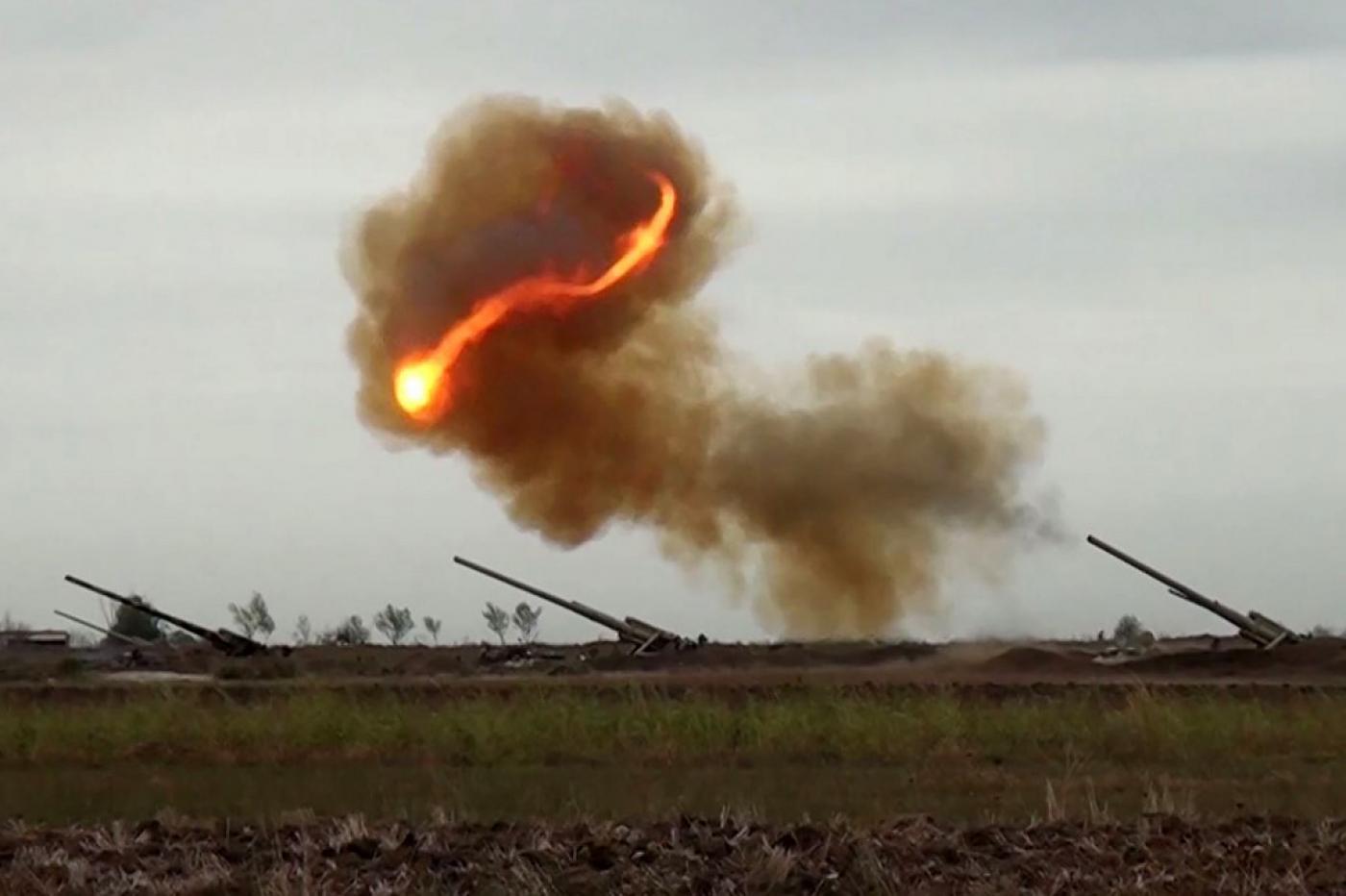
Leave a Reply
You must be logged in to post a comment.